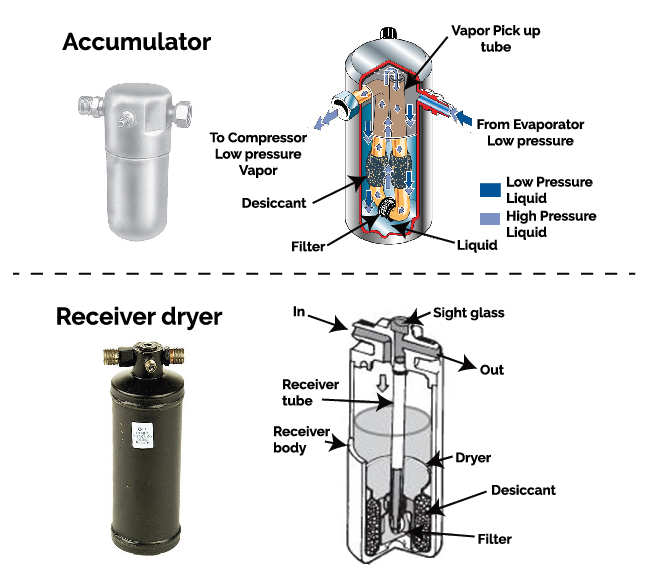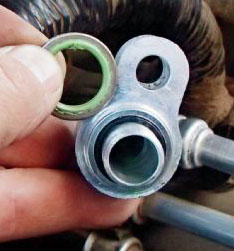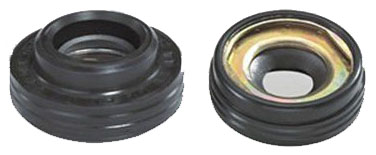Refrigerant leaks cause the most damage
Before a car AC system is filled at the factory, air and humidity are removed by applying a vacuum to the entire system. Then the refrigerant and lubricating oil are added. If the system develops a leak and outside air enters the system, the moisture in that air combines with the refrigerant and oil to form acids that degrade all the components in the AC system. The acid corrodes metal parts, reduces the lubricating efficiency of the oil and causes accelerated wear on all moving parts.
To combat acid formation, car AC systems include either a receiver/dryer or accumulator. Both components contain desiccant to absorb and retain moisture within the system. But once the desiccant becomes saturated, any additional moisture entering the system will contribute to acid formation.
 [/vc_column_text]
[/vc_column_text]
 Simply refilling the system doesn’t negate the negative effects of the moisture inside the system.
Simply refilling the system doesn’t negate the negative effects of the moisture inside the system.
Over time the acid and oil breakdown and overall lack of lubrication cause the cylinders and pistons to wear, and the worn metal particles spread throughout the AC system. The combination of acid, degraded oil and worn metal is referred to as Black Death because of the black sludge that accumulates in the evaporator and condenser coils and all AC hoses. In some cases, the technician can flush the sludge from the lines and coils. But in other cases, all AC components must be replaced, costing upwards of $2,000.

Oil starvation also causes AC compressor failure
As car AC systems lose refrigerant and are recharged, many DIYers and some technicians fail to replace the lost oil, resulting in a lack of lubrication.
Compressor shaft seal leaks cause compressor failure
The point where the compressor shaft enter the compressor body is  prone to leaks due to wear on the compressor shaft seal. One indication of compressor shaft seal failure is the presence of oil on the clutch and a pattern of oil flung onto the underside of the car’s hood. This is caused by refrigerant and oil leaking past the compressor shaft seal and reaching the pulley, which then flings it in an arc under the hood.
prone to leaks due to wear on the compressor shaft seal. One indication of compressor shaft seal failure is the presence of oil on the clutch and a pattern of oil flung onto the underside of the car’s hood. This is caused by refrigerant and oil leaking past the compressor shaft seal and reaching the pulley, which then flings it in an arc under the hood.

